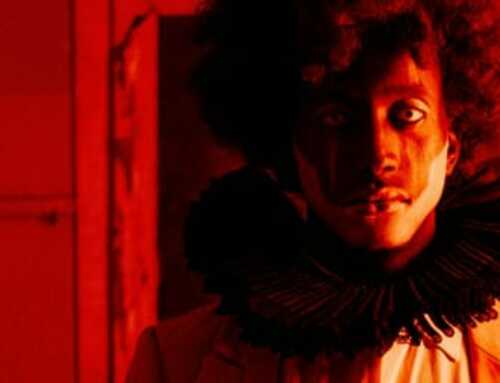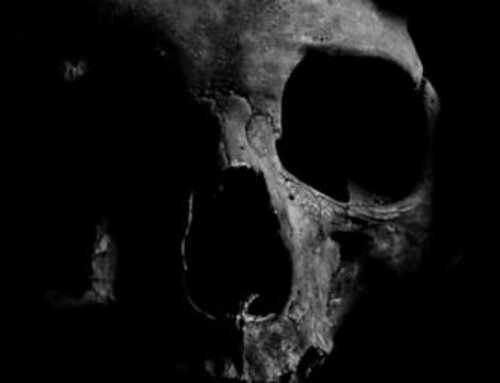Growing up as a bisexual kid in the midwest I didn’t have a lot of connections to queer culture. I didn’t know anyone who was queer and outside of comics, mainstream media was aggressively straight in the ’90s and 2000s which often felt isolating. The one genre that seemed to consistently buck this trend across mediums was horror. As a result, when I think of the stories that have defined me and my Horrific Origin the horror genre looms large. In many ways, it’s the genre that has had the most influence both on my queer identity and my life in general.
Like many 90s kids, my introduction to queer horror was Anne Rice’s Vampire Chronicles. While Rice’s iconic series dates back to the late 70s it was the 1994 adaptation of Interview With The Vampire starring Tom Cruise and Brad Pitt that made the series a mainstream success. It was that movie that led my older brother to buy the books, which were in turn passed down to me at what, in retrospect, was far too young of an age.
Sensuality was built into Rice’s work and none of the characters expressed any gender preferences, something I’d never encountered but that resonated with my own feelings. The series casual queerness partnered with the similarities between vampiric transformation and the experience of puberty made the books feel intensely personal. By middle school, I was obsessed both with Anne Rice’s work and with vampire horror in general. While the books lacked the specific language of queerness and Rice’s character’s lacked conventional human sexuality, it was enough for me to latch onto even in elementary school.
If Rice’s work introduced me to the world of queer horror, Buffy the Vampire Slayer solidified its importance to me. I was introduced to the show by an aunt in 2005 a couple years after it had gone off the air. The show felt like a combination of everything I loved: low-budget horror, comic-book style action, quippy dialogue, and teen drama. It almost immediately became my absolute favorite piece of fiction, a title it retains to this day.
It was the increasingly overt queerness of the show that elevated its importance to me. Queerness was built into the show from the start, Buffy’s secret life as a vampire slayer serving as a metaphor for the queer experience, but that gradually gave way to more openly queer characters. Buffy’s witch best friend, Willow, came out in the show’s fourth season entering into a relationship with another female character. Later the villain Andrew would be presented as bisexual, even if the show stopped short of ever using the word. A show about bridging the supernatural and the mundane was the perfect bridge between the ethereal, supernatural queerness I was reading in Rice’s work and my own experience’s as I entered my teenage years.
By the end of high school, I was actively seeking out queer creators, which led me to the writer Joey Comeau. He would quickly become one of my favorite authors. My favorite of his novels, of course, was his horror masterpiece One Bloody Thing After Another which follows three characters each dealing with their own intersecting stories involving ghosts, zombies, and supernatural powers. Like BtVS, it boasts a wide range of tones from heartbreaking to comedic and back.
I’d been drawn to Comeau because of his prominence in the queer-lit genre, but ironically it was the lack of queerness as a theme in One Bloody Thing After Another that most impacted me. While one of the three leads, Jackie, was gay it wasn’t the source of her trauma. The central theme of the book is how people deal with familial death in Jackie’s case she’s haunted by the ghost of her own mother, who she’d watched die of cancer – a trauma source completely unrelated to her orientation. It was the first piece of queer fiction where I didn’t feel like queerness was linked to either trauma or social isolation.
The most recent piece of queer horror to have a profound effect on me was the game Life is Strange. The 2015 game from developer Dontnod and published by Square Enix is a Twin Peaks inspired adventure & mystery game. It follows Max, a teenage girl who discovers she can rewind time and uses it to investigate a local serial killer. She is joined by her childhood best friend Chloe, whose girlfriend was one of the serial killer’s victims. While the player can choose to play Max as straight, I read her as bisexual and put her in a romantic relationship with the explicitly queer Chloe.
In 2015 having the opportunity to play a character as bisexual was still fairly novel, if not groundbreaking. However, as the end of the game approached and it was revealed that Chloe was supernaturally doomed I feared the “bury your gays” trope was going to rear its head. Instead, the game ends with a player choice: let Chloe die in order to stop a supernatural storm or save her and risk the lives of various townsfolk. While this sort of moral choice is common in modern games the additional context made the choice incredibly impactful for me. Choosing to save Chloe didn’t feel like making a choice about a character’s fate, or even the moral dilemma so typical in these kinds of games, it felt like the game was empowering me to dismantle the trope itself. It was a magical moment that does what no other medium could, giving the player agency over the story.
Queer horror has been consistently important to me through every stage of my life ever since my Horrific Origin. Interview With The Vampire was my first window into the queer world. Buffy the Vampire Slayer gave me queer characters I could actually relate to. One Bloody Thing After Another showed me that being queer wasn’t synonymous with suffering. Life Is Strange made my queerness a point of empowerment rather than oppression. These stories have all stuck with me, reshaping how I see the world. I can’t wait to see where the genre takes me in the future.
See you next week for another Horrific Origin!
| Horrific Origin – Pillars Of Queer Horror | ||
|
Life is Strange - Trailer |
||
|
|
||











